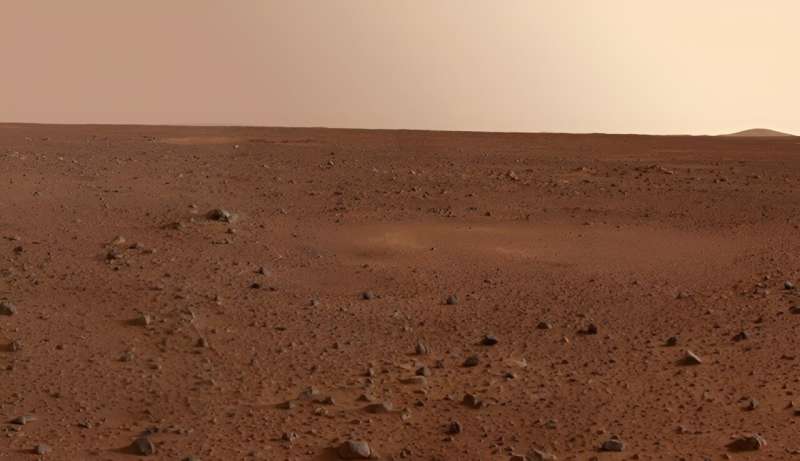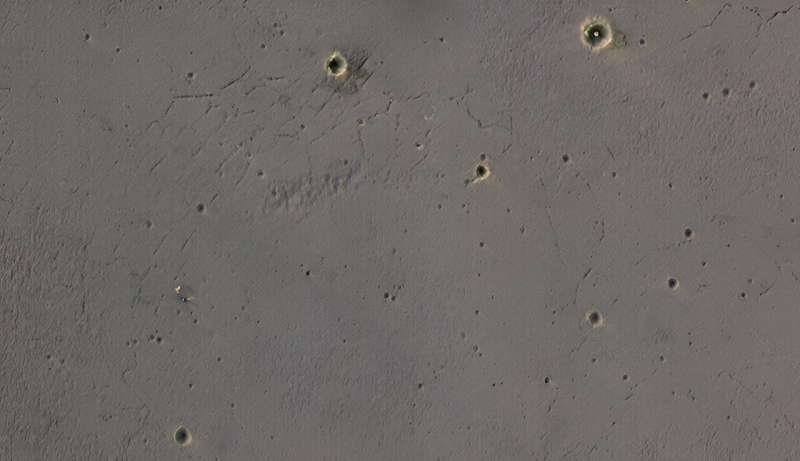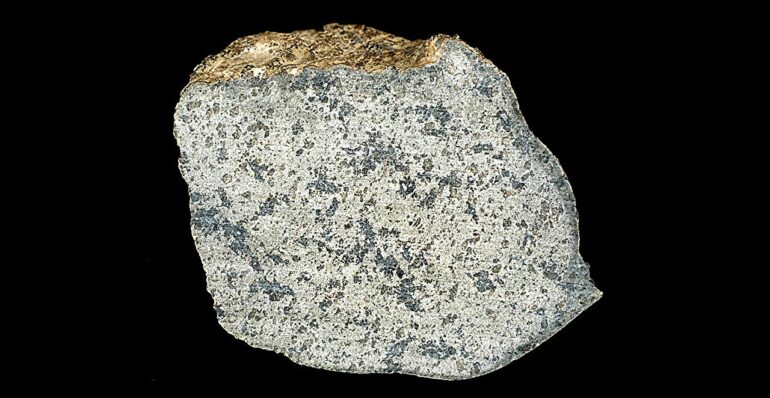Earth is occasionally hit by little pieces of Mars. These bits of Martian rock are incredibly rare, but can tell us a lot about the geological history of the red planet. One of the biggest issues for scientists studying these meteorites, however, has been a difficulty in dating them. Different techniques have come back with different ages, making it hard for researchers to pin down where on Mars the rocks originated.
But a new paper published in Earth and Planetary Science Letters has solved this problem. Putting Martian meteorites in a nuclear reactor has confirmed their curiously young age. Most meteorites from Mars are just a few hundred million years old, and likely come from relatively recent volcanic events such as the eruptions on the largest volcano in the solar system, Olympus Mons.
Dr. Ben Cohen, a volcanologist at the University of Glasgow, has been working with colleagues at the Natural History Museum, the University of Edinburgh, and researchers in the U.S. to figure out once and for all how old Martian meteorites actually are.
“We know from certain chemical characteristics that these meteorites are definitely from Mars,” explains Ben. “They’ve been blasted off the red planet by massive impact events, forming large craters. But there are tens of thousands of impact craters on Mars, so we don’t know exactly where on the planet the meteorites are from. One of the best clues you can use to determine their source crater is the samples’ age.”
The Shergottite Age Paradox
While more than 70,000 meteorites have been identified on Earth, only roughly 358 of these are thought to have originated on Mars. Impact events kicked up Mars’ surface rocks and threw them into space. These incredibly rare rocks then swirled around the solar system before crashing down onto Earth millions of years later.

The young age of the shergottite meteorites seemingly did not match with the typically ancient surface of Mars. © NASA/JPL/Cornell
Martian meteorites are typically grouped into three main categories, with a fourth for those currently “unclassified.” Chassignites are the rarest of these rocks, with only two ever having been discovered. Next are the nakhlites, which formed about 1.3 billion years ago during volcanic eruptions on Mars. The most common type of meteorites are those known as shergottites.
Around three-quarters of all Martian meteorites are classed as shergottites. They are also thought to have formed in roiling lavas of Martian volcanoes but have formed something of a conundrum for scientists studying the red planet too.
This is because most of Mars’ surface is extraordinarily old. Using the abundance of impact craters, researchers know that the majority of the planet’s surface is between three and four billion years old. But when scientists came to age the shergottite meteorites, they got a huge range of ages, from four billion years old to less than 200 million years old.
This created a problem—if the surface of Mars is, on average, billions of years old, then how were shergottite meteorites coming back with ages of just a few hundred million years old? This mismatch became known as the Shergottite Age Paradox.
“One of the ideas was that impact events hitting Mars could be ‘resetting’ the methods that geologists use to determine the age of rocks,” explains Ben. “That was used to say that the meteorites were actually four billion years old, and all the younger numbers were because the rocks were being either fully or partially reset by the heat and pressure of these impacts.”
But as more and more meteorites were studied by different techniques, the bulk of the results obtained were curiously young, with evidence that the ages were not reset by impact. Clearly, something was not quite right.
How to date Mars
Martian meteorites have historically been dated using a range of methods, typically giving a spread of ages. One of these is what is known as the “argon–argon” method. In the simplest of terms, this measures the rate of decay of the isotope potassium-40 to argon-40. Potassium is an abundant element, making this method very versatile. It can be used to measure the age of a variety of rocks, from the eruption of Mount Vesuvius to the start of the solar system itself.
This is useful for rocks that have formed on Earth, as scientists are able to account for contamination of additional argon making its way into the rocks which might skew the age. But things are a little trickier for rocks that have been whizzing around in space for millions of years.

Scientists use the number of impact craters on the surface of Mars to estimate the age of rocks. © NASA/JPL-Caltech/Univ. of Arizona
“There are five potential sources of argon that can be contained within shergottite meteorites,” says Ben. “That compares to rocks on Earth, where there are only three.”
“The fact that there’re these two extra sources of argon in Martian samples is what’s making the argon–argon system get complicated for the shergottites.”
By going back and looking at the argon–argon method with modern equipment and technology, Ben and his colleagues were able to reassess seven Martian meteorites. This included sticking very small pieces of them into a research-only nuclear reactor to measure the argon concentrations as accurately as possible, and then seeing what ages they came back with.
By looking more precisely at the chemistry of the meteorites they were able to account for any argon the rocks gained while in space. They were also able to correct for how much contamination there had been from both the Martian and Earth atmosphere.
“Once we did that, the argon–argon ages came out as being young and matched perfectly with other methods, like Uranium-Lead,” explains Ben.
Professor Caroline Smith is the Head of Collections at the Museum and co-author of the new paper. She says, “Exciting science like this using samples from the Natural History Museum’s collections is helping unravel the history of the planets in our solar system.”
“This work also links to our ongoing meteorite research program and our continued Mars research using meteorites and with space exploration missions such as Mars 2020 (Perseverance rover), Mars Science Laboratory (Curiosity rover) and ExoMars.”
While this new research meant that the various dating methods now lined up, it still left the problem of the Shergottite Age Paradox.
The best explanation for this is that the frequent bombardment of Mars has created a layer of crumbly rock on the surface known as regolith. Over time, as there have been more and more impacts, this layer of regolith has accumulated, while at the same time fresh volcanic eruptions brought newer rocks to the surface. This meant that for every new impact, the likelihood of the older rock being kicked up and ejected into space was reduced.
“The older the sample, the thicker the regolith, and the thicker the regolith the harder it is to blast the underlying rock off the surface of Mars,” explains Ben. “And that would explain why around three-quarters of the Martian meteorites are the ‘young’ shergottites, with comparatively fewer of the older types of Martian meteorites.”
More information:
Benjamin E. Cohen et al, Synchronising rock clocks of Mars’ history: Resolving the shergottite 40Ar/39Ar age paradox, Earth and Planetary Science Letters (2023). DOI: 10.1016/j.epsl.2023.118373
Provided by
Natural History Museum
This story is republished courtesy of Natural History Museum. Read the original story here
Citation:
Most Martian meteorites are curiously young in age (2023, October 30)



